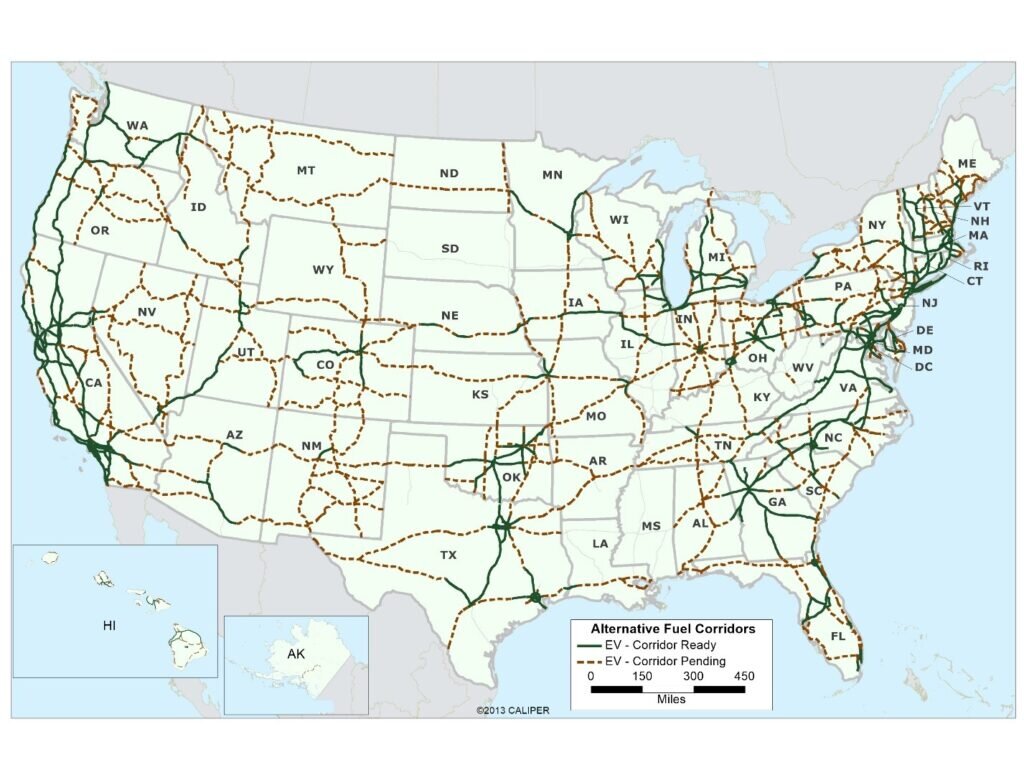Making the National EV Charging Corridor a Reality
We’ve got a long history of the Great American Road Trip in the summer. From cities and coasts to National Parks and everything in between. And those trips with a traditional car are well supported by the United States’ interstate highway system. This network of over 160,000 miles of criss-crossing roadways allows us to freely travel to any destination in the country. Anyone who has driven along these roads knows the familiar yet necessary sight of gas stations dotting the roadside every few miles. With a finite range, vehicles need to stop to refuel, and for the better part of a century, those have been combustion engine vehicles topping off their gas tanks.
But what about EV car owners? A new reality is quickly emerging as more and more consumers are ditching gas cars for EVs. They need stops along the roadways to charge their EVs - because they want the road trips as much as anyone else!
That’s where the Alternative Fuel Designated Corridor seeks to save the day for EV owners.
What are Alternative Fuel Designated Corridors?
Alternative Fuel Designated Corridors Map Source: WhiteHouse.gov
The Department of Transportation (DOT) has “designated national plug-in electric vehicle charging and hydrogen, propane, and natural gas fueling corridors in strategic locations along major highways to improve the mobility of alternative fuel vehicles.”
While this project is new, the DOT has consulted and worked with state and local officials, as well as industry-leading experts, to make US highways more accessible to vehicles that pollute significantly less than gas-powered cars.
Why are they important?
By establishing and designating Alternative Fuel Designated Corridors, DOT is helping to usher in a system where people are free to travel exactly how they’re used to, while significantly reducing emissions on US roadways. By substituting our reliance on gasoline for cleaner, alternative fuel sources like Hydrogen Fuel Cell powered EV charging, we can bring about a more sustainable future, without radically shifting consumer habits.
How do we make them a reality?
Currently, the DOT has designated almost 60,000 miles of highways in 48 states as “Corridor Ready,” meaning drivers can find EV charging stations no more than 50 miles apart from each other, and no more than 5 miles off the freeway. In order to realize DOT’s plan for pending corridors, we need the infrastructure to be able to build EV charging stations every 50 miles, across hundreds of thousands of miles of roadways.
Renewable Innovations is committed to doing our part, and we anticipate that our Hydrogen Fuel Cell EV Rapid Charge stations will play a significant role in bringing about these necessary changes. Not only do these charging stations offer rapid EV charging, but they do so with a self-contained fydrogen fuel cell, meaning a cleaner source generating that electricity, and a more dependable and portable system than relying on the power grid.
For more information on Corridor-Ready Alternative Fuel Corridors, click here to read more from the Department of Transportation.
To learn more about our Electric Vehicle (EV) Rapid Charge HFC Systems, click here.
Ready to get started, contact us


